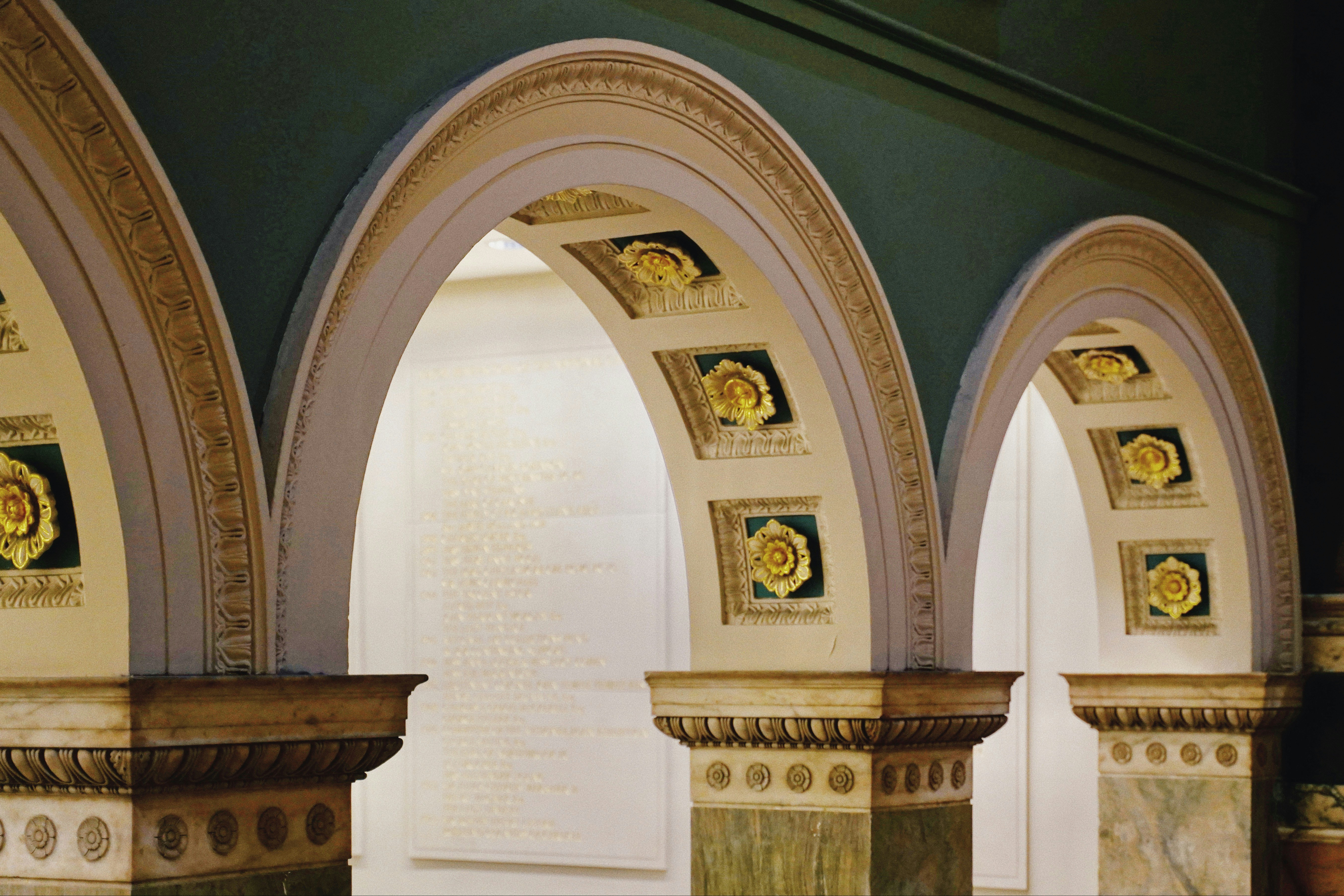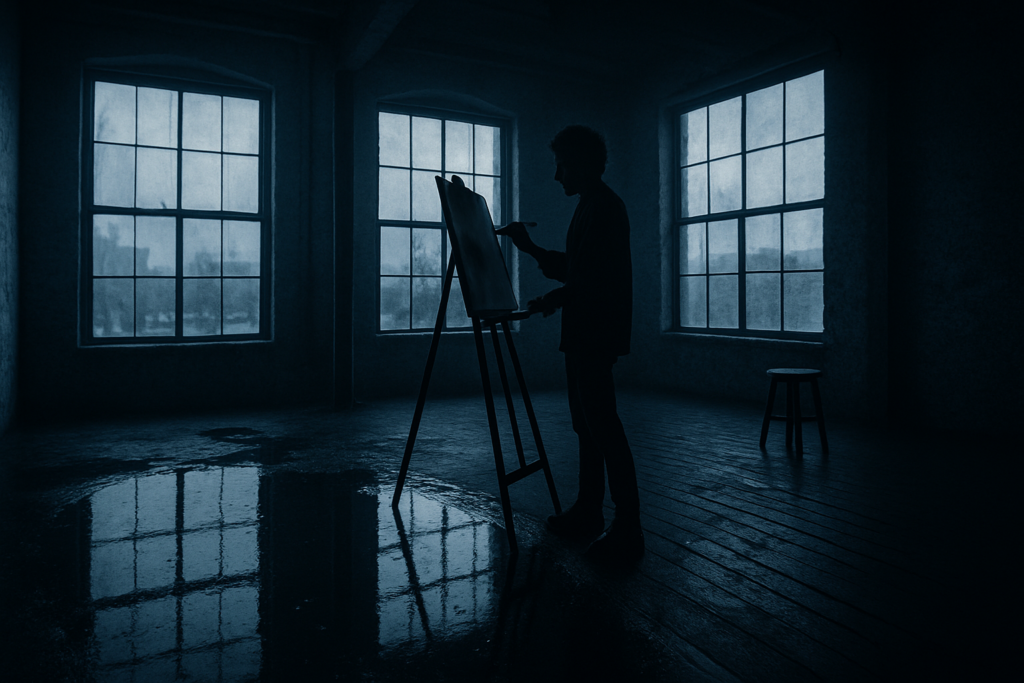Start with the Basics That Matter
Let’s keep it simple: SEO is how people find you online without knowing your name. It stands for Search Engine Optimization, but don’t let that scare you. For artists, it just means setting up your website and content so Google (and other search engines) can understand it and show it to the right people. Think of it like hanging your art in a well lit gallery instead of a dark basement.
Search engines work like digital tour guides. Someone types in “bold abstract portraits” or “handmade ceramic espresso cups.” If your site speaks that language plainly and clearly you’re more likely to show up in the results. It’s not about tricking algorithms; it’s about clarity. Help both people and platforms know what your work is and why it’s worth seeing.
And here’s the deal: being talented isn’t enough online. You could be the next Basquiat, but if no one can find you, it won’t matter. Visibility opens doors for commissions, collaborations, gallery invites, and sales. The web is crowded. Being searchable gives your art a fighting chance.
Keywords Are Your New Paintbrush
Don’t overthink it keywords are just the words your future buyers are typing into Google. Think like them. Are they searching for “moody watercolor portraits,” “abstract coastal landscapes,” or “black and white ink drawings”? Start there. Use free tools like Google’s Keyword Planner, Ubersuggest, or even the search bar autocomplete to get inspired. The goal isn’t volume; it’s relevance. Go niche if that’s where your art lives.
When it comes to naming your artwork and pages, creativity’s great but intent wins. Instead of titling a piece something vague like “Wanderings,” try something more searchable and specific: “Surreal Forest Illustration Ink on Paper.” You’re not selling out your style; you’re simply giving people a way to find it.
Once you’ve locked in the right terms, put them to work. Keywords should show up in your page titles, artwork names, meta descriptions, image alt text, and body copy subtle, not spammy. It’s less about stuffing and more about clarity. Make it easy for people and search engines to understand what you do.
Want to go deeper? This guide on how to promote art with SEO breaks it all down with clean examples and next steps.
Structure Your Site Like a Gallery

Think of your art website like a physical gallery. If visitors can’t find the entrance or get lost between rooms chances are they’ll bounce. A clean, mobile friendly layout isn’t just good design; it helps users stick around and explore. And search engines take that seriously. Sites that load fast, scale well on phones, and are easy to navigate earn better rankings. Simple as that.
Use categories to group your work by style, medium, or theme. And don’t stop there. Link between pieces, blog posts, and collection pages. Internal links give both your visitors and Google a clear path through the site. They help keep eyeballs on your content and tell search bots what matters most.
One more thing: images. Yes, you’re an artist, and visuals are everything. But don’t let giant file sizes slow your site to a crawl. Compress images the smart way without wrecking the detail. Tools like TinyPNG or Squoosh can help. Google notices things like page speed and mobile responsiveness when it crawls your site. Give it less reason to penalize and more reason to rank.
This is structure 101. It’s not glamorous, but it sets everything else up to work.
Fresh Content Keeps You Relevant
Search engines love movement. If your art website hasn’t been updated in six months, Google assumes you’ve packed up and left. Regular updates new paintings, blog posts about your process, a behind the scenes video signal that you’re active, which helps boost your rank.
But it’s not just about uploading another watercolor and calling it a day. If you weave in storytelling around each piece why you made it, what inspired you, the techniques you used you give audiences and search engines more to work with. That kind of descriptive copy naturally includes keywords that help your content surface in results.
Also: don’t let your older work gather digital dust. You can refresh older pages with new context, revisit past collections in blog posts, or bundle pieces in themed galleries. Updating gives those pages new life and brings long term SEO value. Creating fresh content doesn’t always mean starting from zero. Sometimes it’s just keeping what you already made in motion.
Links That Actually Work for You
You can build a well structured site with perfect keywords and still be invisible if no one’s linking to you. Backlinks links from other sites to yours are a quiet but serious force behind art website SEO. Start with art blogs, digital magazines, and collector focused sites that already have authority. A single feature or mention can give your visibility a major lift.
Next up: interviews or guest pieces. Even small podcasts and niche newsletters carry SEO weight and they come with built in audiences. Don’t sleep on the power of collaboration either. Cross promoting an exhibit or project with another artist or an indie gallery? That link back to your site helps both people and search engines pay attention.
Social media also plays a long game. Share posts that link directly to your pieces or blog content. Don’t post just to post drive traffic that lands, sticks around, and explores. That’s the signal Google looks for.
Need a game plan? This article goes deeper: using SEO to promote your art lays out solid outreach tactics that work without making you sound like a marketer.
Real Talk: Results Take Time
Here’s the thing SEO is not magic. You won’t rank on page one overnight just because you updated your image titles or dropped in a few keywords. It takes time. Months, usually. But that’s where most artists tap out, and it’s exactly why staying consistent matters more than being perfect.
Think of SEO like a sketchbook. The early pages might look rough. But if you keep showing up and refining adding new content, tagging your work smartly, connecting with others the visibility snowballs. Search engines slowly learn what you’re about. People start finding you.
Combine smart SEO with real creative energy, and you’ve got something powerful. Authenticity plus a little technical effort can go a long way. Passion is magnetic, and when you make it easier for the internet to recognize your work, the right audience will show up.

 Leonerico Vaughan, as both an author and collaborator in the development of Avant Garde Artistry Hub, brings a unique perspective to the platform. His contributions center around the intersection of art and technology, offering artists valuable insights into the latest creative tools and techniques. Leonerico’s passion for innovation shines through in his work, helping to keep the artistic community informed and empowered.
In addition to his writing, Leonerico has played a key role in shaping the platform’s resources, particularly those focused on helping artists build sustainable careers. His dedication to the success of Avant Garde Artistry Hub makes him a vital part of its mission to support and inspire modern artists.
Leonerico Vaughan, as both an author and collaborator in the development of Avant Garde Artistry Hub, brings a unique perspective to the platform. His contributions center around the intersection of art and technology, offering artists valuable insights into the latest creative tools and techniques. Leonerico’s passion for innovation shines through in his work, helping to keep the artistic community informed and empowered.
In addition to his writing, Leonerico has played a key role in shaping the platform’s resources, particularly those focused on helping artists build sustainable careers. His dedication to the success of Avant Garde Artistry Hub makes him a vital part of its mission to support and inspire modern artists.